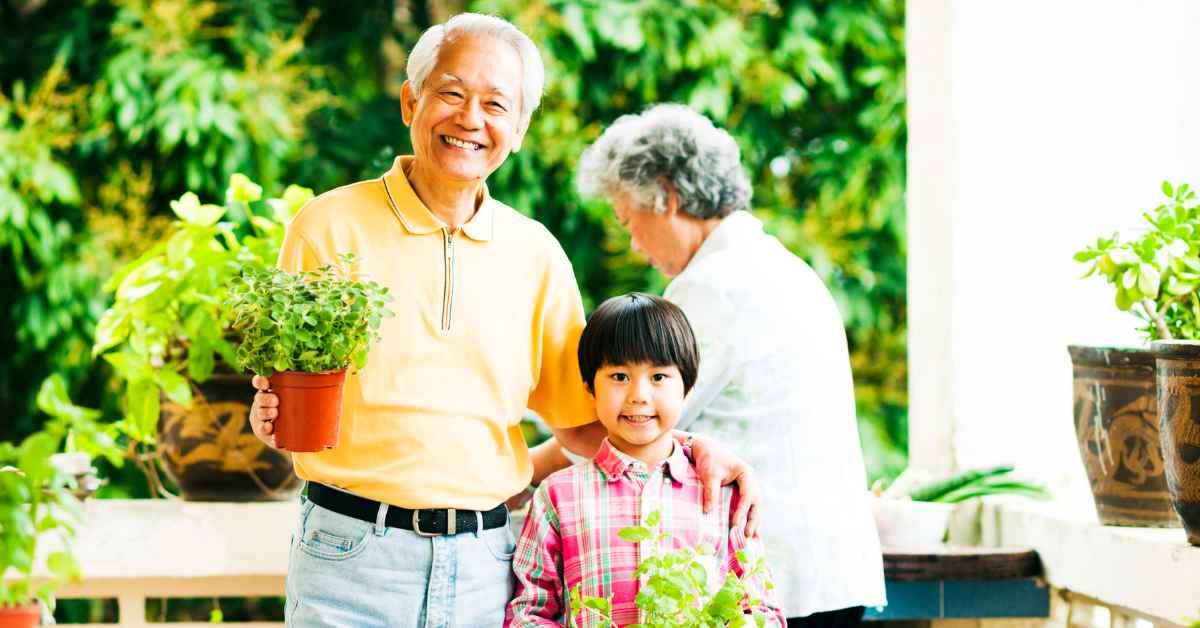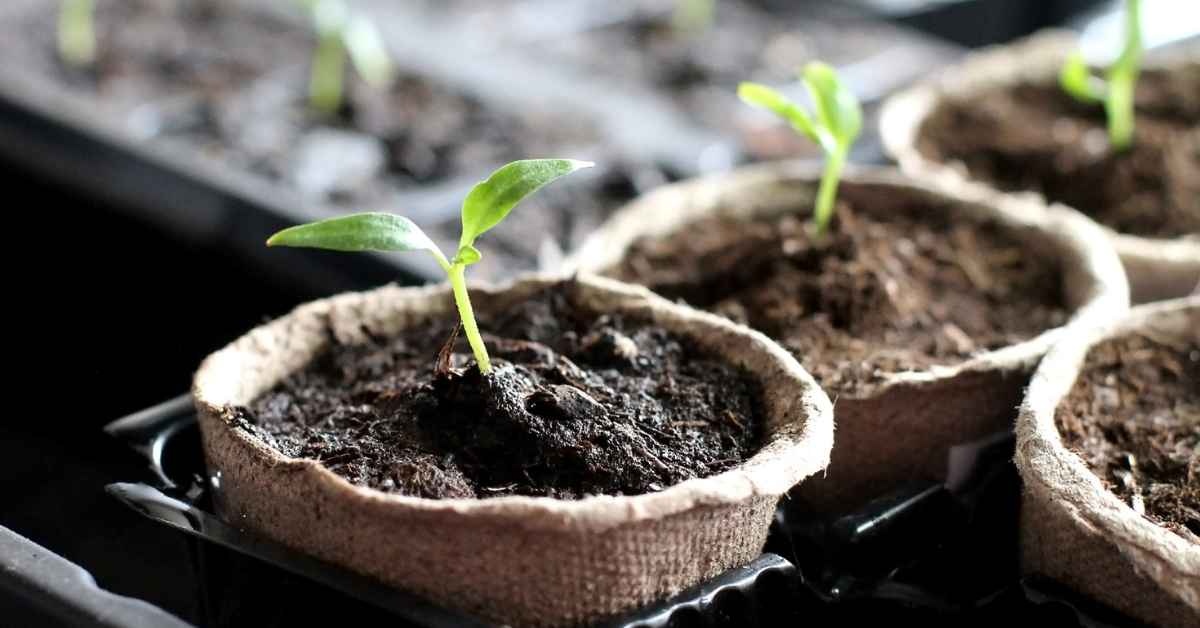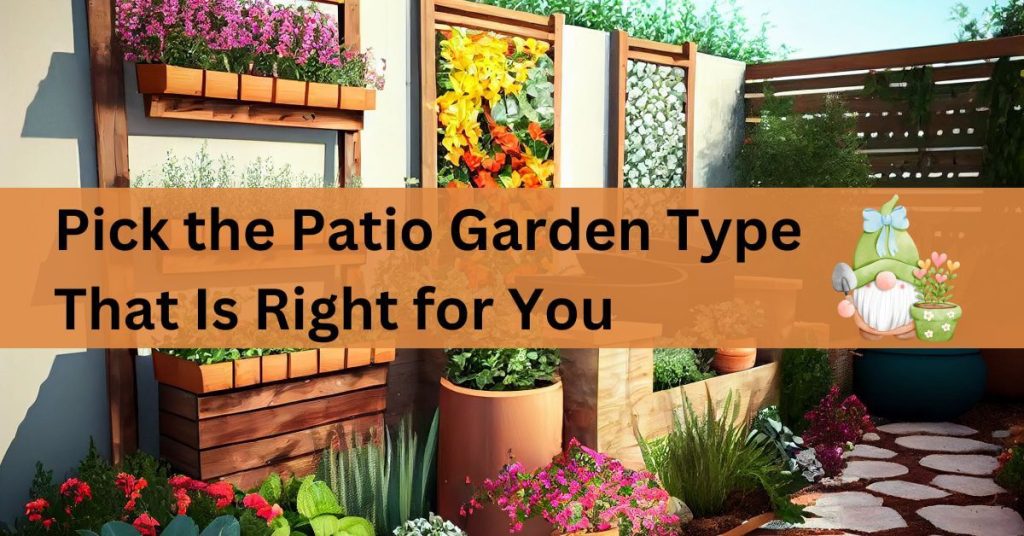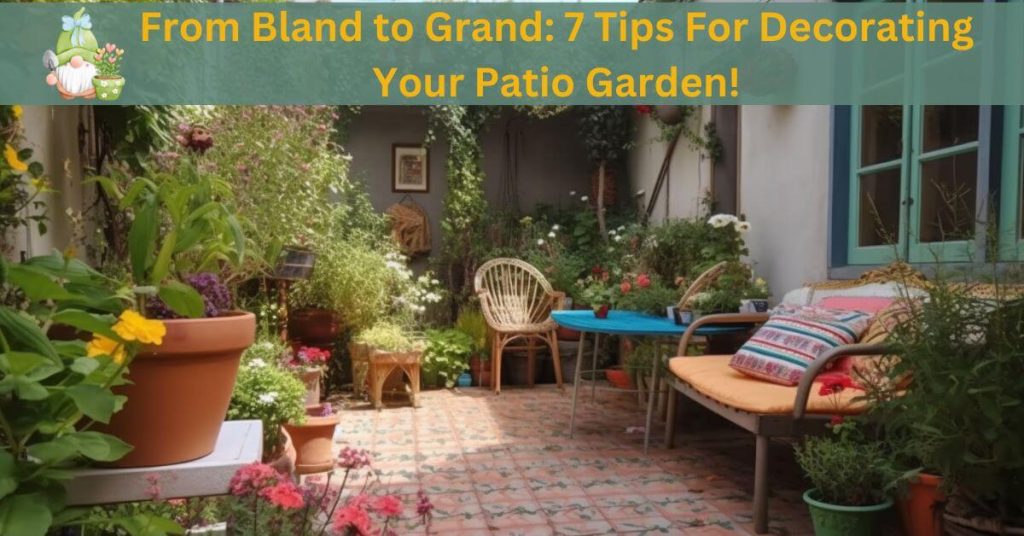
Welcome to the world of patio gardening!
Whether you’re an avid green thumb or just starting out, this blog post will provide you with all the tips and tricks needed to create your own outdoor oasis.
From choosing the ideal setting for your garden, selecting pots and containers, preparing soil for planting seeds or seedlings, caring for your plants as they grow and harvesting them when ready – we will cover it all!
So, let’s get started on creating your perfect patio garden.
The Ideal Setting For A Patio Garden
When considering where to place your patio garden consider factors such as sunlight exposure throughout different times of day (morning sun is best), wind protection from gusty breezes (a fence can help protect delicate plants) and access to water sources like a hose or rain barrel.

If space permits try adding some seating around so that you can enjoy watching nature unfold right in front of you!
Pots And Containers
Choosing pots or containers should be based on both practicality but also aesthetics. Pick something that fits into whatever style theme/design elements are already present in the area surrounding it.
Consider size too – larger planters may require more frequent watering while smaller ones have less surface area exposed, which means less evaporation from heat radiation off concrete surfaces during summer months.
Finally make sure there is adequate drainage holes at bottom otherwise roots could become water-logged causing root rot issues down line later on.

There are many different kinds of pots and containers that you can choose from.
Some are made to hang from the railing of a balcony, while others have racks that can be put along the walls. The bigger pots and containers will be put right on the floor, usually on a rolling plate. There are even pots that can be hung from a ceiling that are great for light plants like strawberries.
Also, consider the weight of your pots and containers. Terracotta pots are popular and look nice, but they can be very heavy. Would you be able to carry them to your patio or bring them up to your balcony?
You might want to consider using pots and containers made of plastic if that is a concern. They are lighter, and some of them can be just as attractive.
Soil, Seeds, And Seedlings
Once deciding what type of container and potting mix works best with whatever plant species being grown, now it’s time prepare the soil accordingly:
- if growing vegetables then you need a good quality organic fertilizer mixed into existing potting mix ensure enough nutrients available nourish crops over course their growth cycle;
- likewise, flowers prefer slightly acidic soils with pH levels around the 6-7 range depending on the specific variety being planted.

Additionally, those looking to start off with seedling route instead of purchasing pre-grown adult specimens can find many local nurseries offer a wide selection of young tender starts ready go home the same day without the hassle of waiting for the germination process to take its course!
Patio Gardening Care
Gardening is a wonderful way to enjoy the outdoors and bring life into your home and patio gardening is an especially great way to get started, as it doesn’t require large amounts of space or a lot of maintenance.
However, proper care must be taken in order for you to achieve desired results by the end of the season.
Just like with a real garden, you will need tools for your patio garden. You won’t need big shovels and spades, but you will need at least a garden fork, a small hoe, a watering can, pruners, and maybe an apron and gardening gloves.
The most important aspect when it comes to patio gardening care is making sure that there’s a regular watering schedule in place, particularly during hot and dry days so that moisture levels remain constantly deep within the roots system, which will help prevent wilting and yellowing leaves commonly seen due lack hydration.

Additionally, fertilizing your plants every few weeks can also help promote healthy growth throughout the season!
And keep an eye out for signs of sickness or pests. You can fight both of these without using toxic chemicals if you use eco-friendly methods. This is especially important if you plan to eat the herbs or vegetables that you grow.
Overall, with some patience and dedication you can have beautiful blooms on your patio all year round! So don’t forget those essential steps – water regularly & fertilize often – for happy & healthy plants!
After Your First Harvest
If you want to, you can take your patio gardening one step further after you’ve enjoyed your first harvest.

You can save the seeds from things like strawberries and tomatoes to plant the following year. This will take time and patience to see results, but it’s also a fun experiment to try and you won’t have to depend on anyone else to get these plants started again.
Summary
Patio gardening has many benefits and few drawbacks. It allows you to enjoy the beauty of nature in the comfort of your own home, and it can also provide fresh air and a pleasant environment for relaxation and contemplation. Additionally, it is a great way to reduce your environmental impact by growing your own food and reducing your consumption of resources.
On the other hand, patios can be quite small and require careful planning to ensure that you make the most of the space available. With careful planning and maintenance, however, a patio garden can be a great addition to any home and one you can enjoy for years to come.


